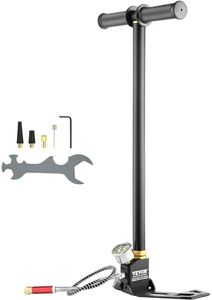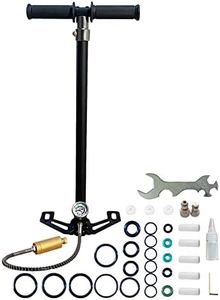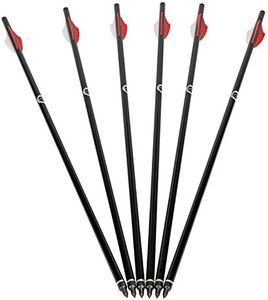We Use CookiesWe use cookies to enhance the security, performance,
functionality and for analytical and promotional activities. By continuing to browse this site you
are agreeing to our privacy policy
4 Best Air Guns
From leading brands and best sellers available on the web.Buying Guide for the Best Air Guns
Choosing the right air gun involves understanding what you want to use it for, whether it's for target shooting, plinking (casual shooting), pest control, or small game hunting. Different types of air guns and their features serve different needs, so it's important to know which specifications will affect performance, ease of use, and safety. Start by thinking about your main purpose, then use the following key features to help you compare models and make an informed choice.CaliberCaliber refers to the diameter of the pellet or BB that the air gun shoots. Common calibers are .177, .22, and .25 inches. The caliber you pick impacts accuracy, range, and stopping power. A .177 caliber is popular for target shooting because it is generally more accurate at short ranges and pellets are cheaper. A .22 caliber offers more power, making it better for pest control and small game. A .25 caliber is the most powerful but is mostly used for bigger game and specialized needs. Think about what you plan to shoot—targets need precision, while hunting or pest control needs more impact.
Power SourceAir guns can be powered by different sources: spring-piston, pneumatic (pump-up), CO2 cartridges, or pre-charged pneumatic (PCP). Spring-piston is simple and reliable, requiring only a single cocking action, but needs steady handling due to recoil. Pump-up pneumatic types let you control power with the number of pumps but can be slow to reload. CO2 guns are easy to operate with quick follow-up shots but require regular cartridge replacements. PCP air guns offer consistent power and high shot counts, but they need special equipment to refill the air tank. Choose based on how much convenience, consistency, and maintenance you're comfortable with.
Velocity (FPS)Velocity, measured in feet per second (FPS), tells you how fast a pellet leaves the barrel. Higher velocities mean more energy and flatter trajectories, which help with accuracy at longer distances. Low FPS (under 600) is suitable for casual plinking and indoor use. Moderate FPS (600–900) is good for more realistic target shooting and light pest control. High FPS (900–1200+) is best for hunting or when more stopping power is needed. However, higher isn't always better; some pellets may not be stable at extreme velocities and could be less accurate. Consider your shooting range and purpose—higher velocity is helpful outdoors and for hunting, while lower FPS might be safer and sufficient for indoor use.
Action TypeAction type refers to how the air gun is loaded and fired. Single-shot guns require reloading each time, offering simplicity and reliability, which is great for beginners or focused target shooting. Multi-shot or magazine-fed guns let you shoot several times before reloading, making them convenient for action shooting or quick follow-up shots. Decide if you prefer the focus and discipline of single-shot shooting or the convenience and speed of a magazine-fed design.
Build Quality and ErgonomicsBuild quality refers to the materials and overall construction of the air gun. Metal and hardwood usually provide a more durable and stable feel, while synthetic materials can be lighter and weather-resistant. Ergonomics is about how comfortable the gun is to hold and shoot. Look for a grip and stock that feel right in your hands and check the overall weight—heavier guns may be steadier but harder to carry for long sessions. Think about how you will use the air gun: stationary target shooters may prefer heavier, solid guns, while those moving around or shooting for long periods may appreciate something lighter and easy to handle.
Safety FeaturesSafety features include things like manual safeties, automatic safeties, and trigger locks that prevent accidental firing. Some air guns have additional mechanisms to make them safer when being handled or stored. If you have younger users or keep the gun in areas where accidents might happen, prioritize robust safety features. Make sure the safety is easy to use and understand, especially if you're new to air guns.







